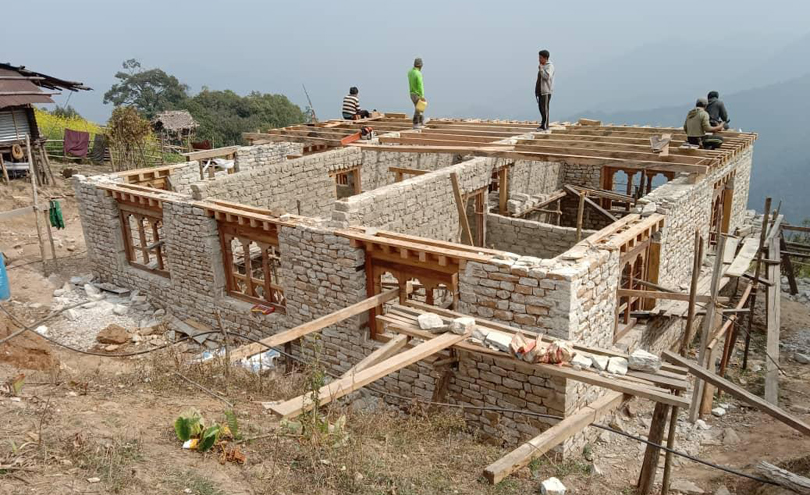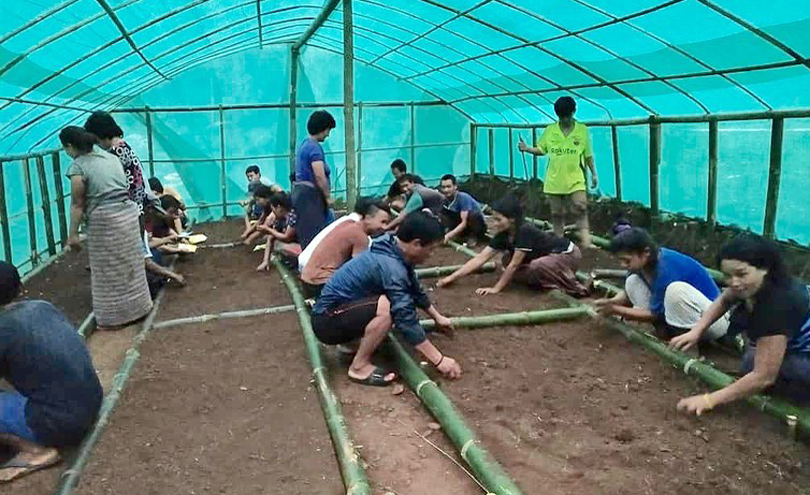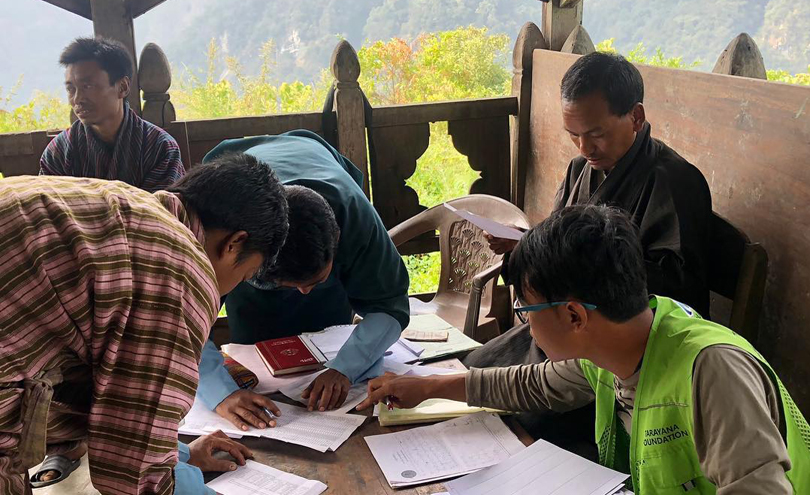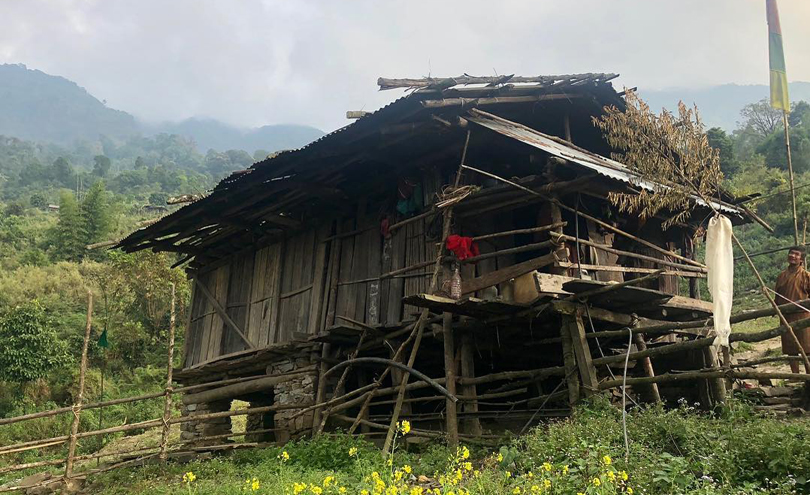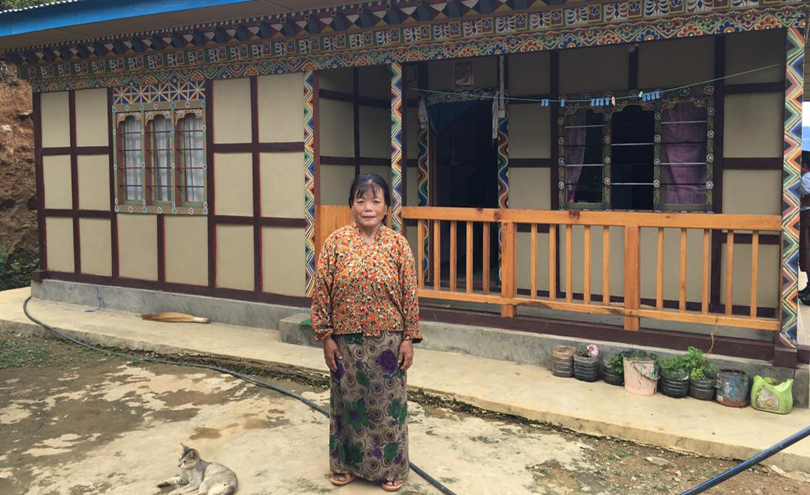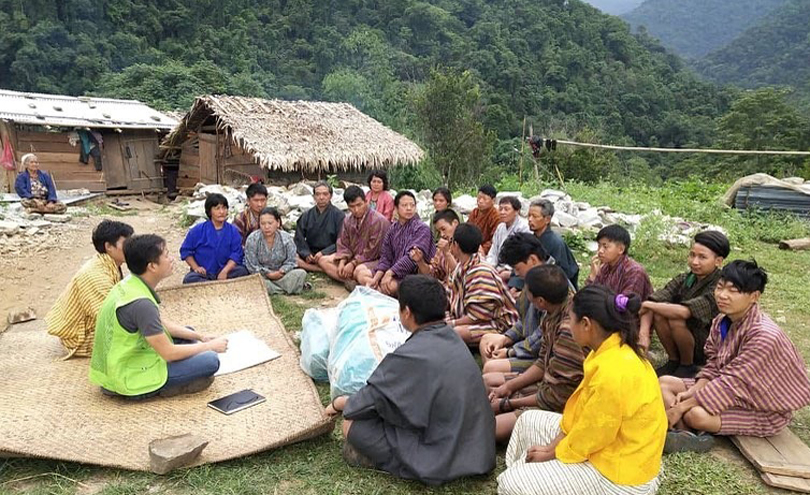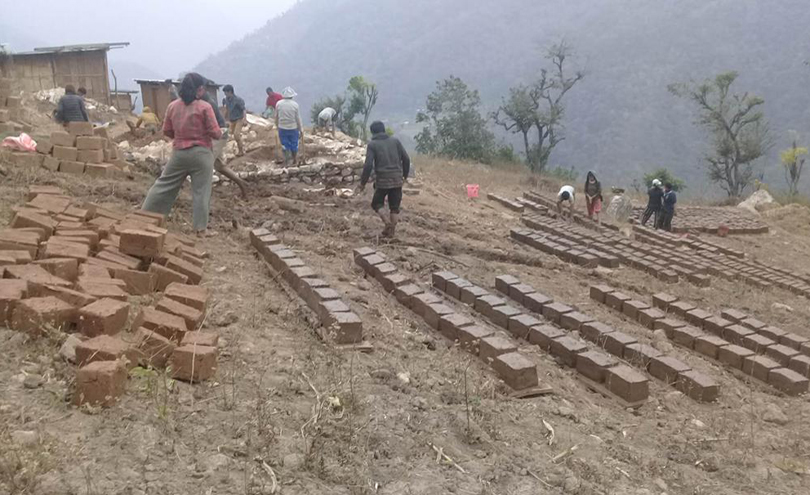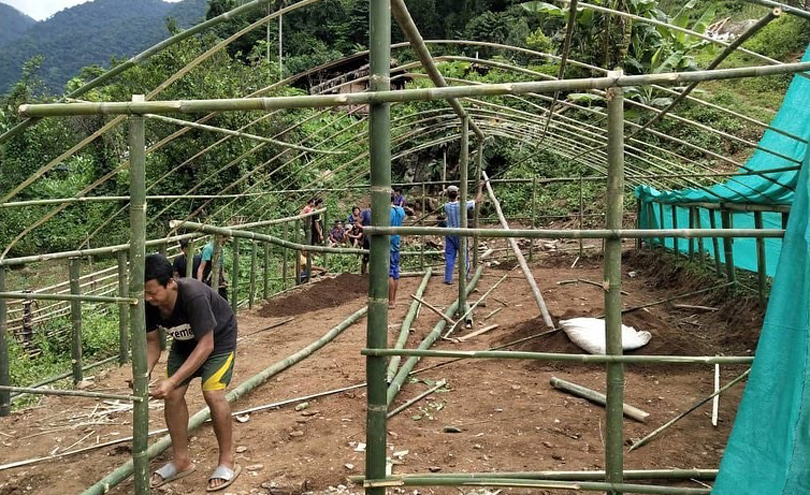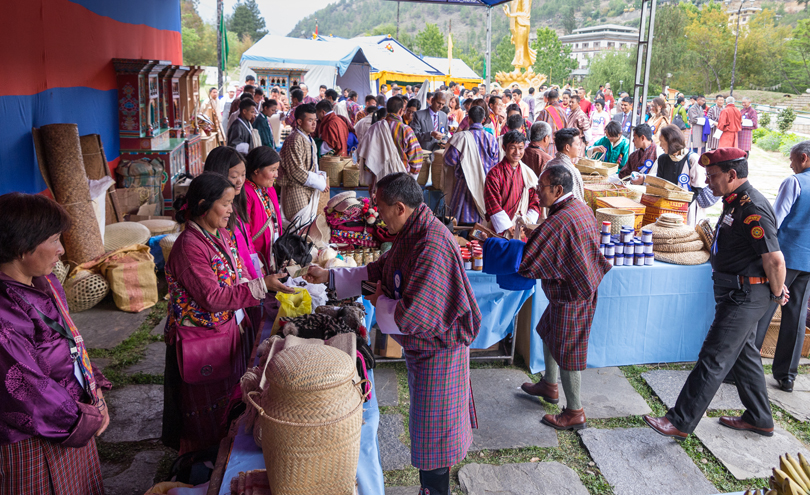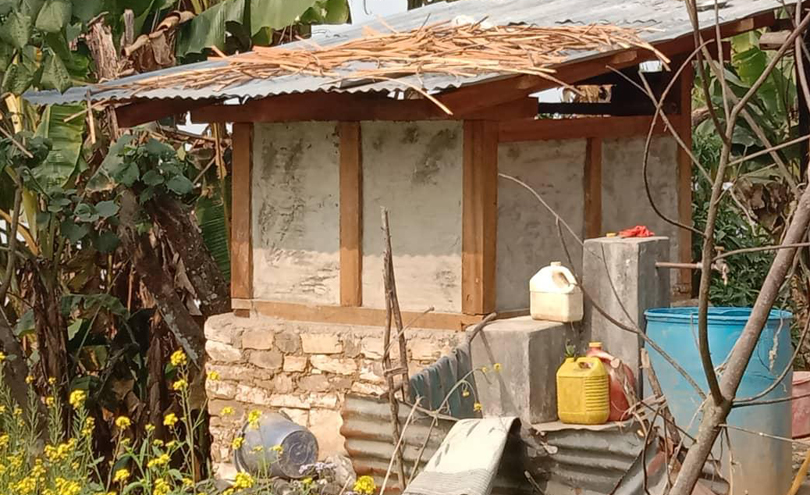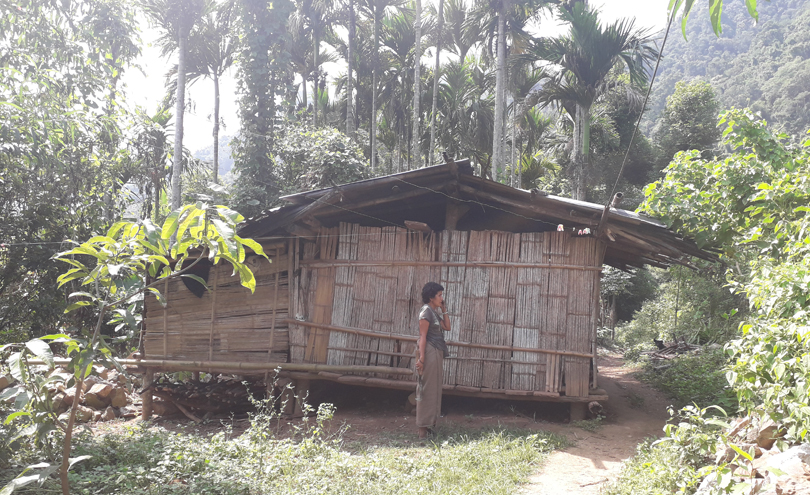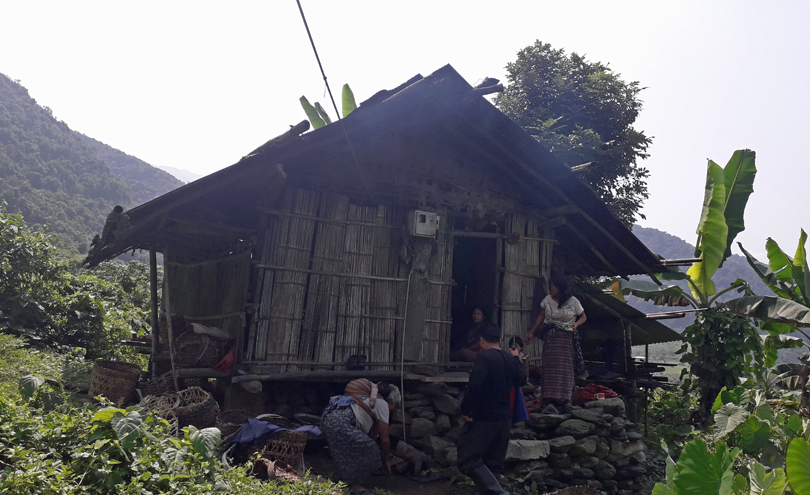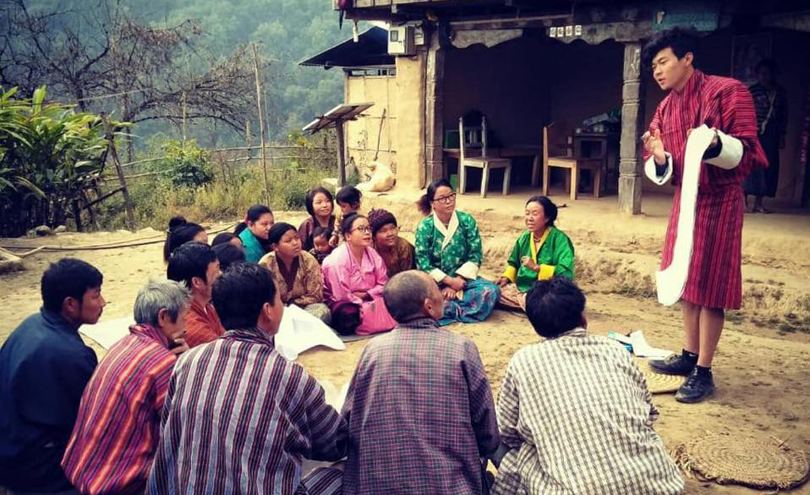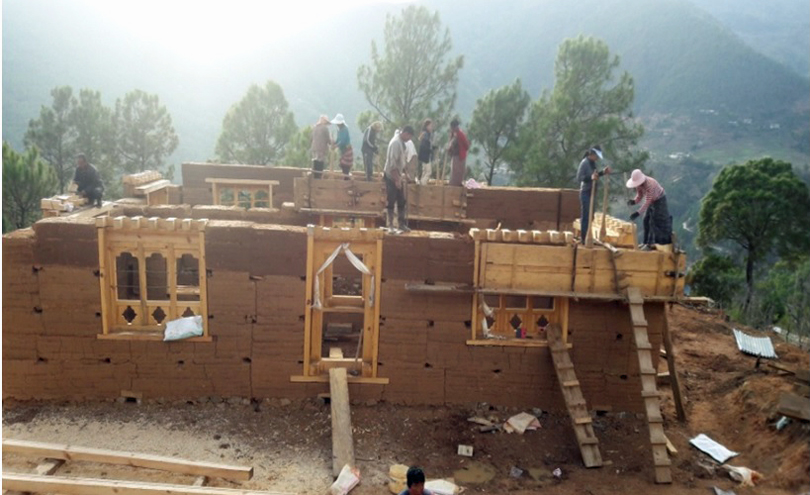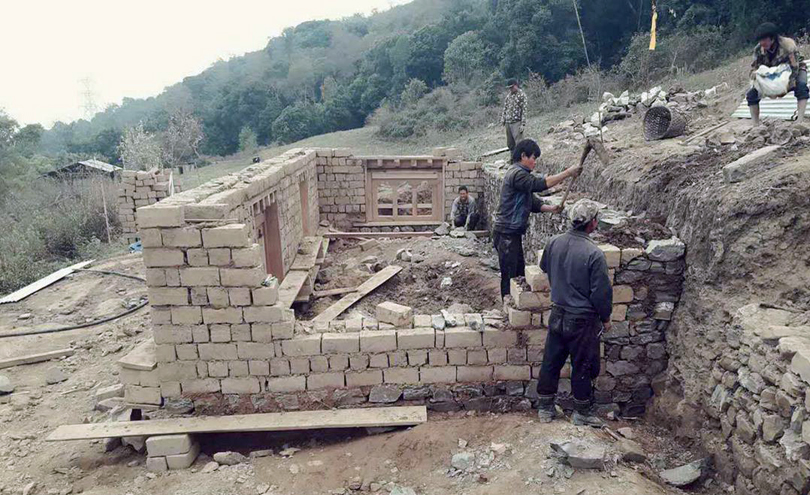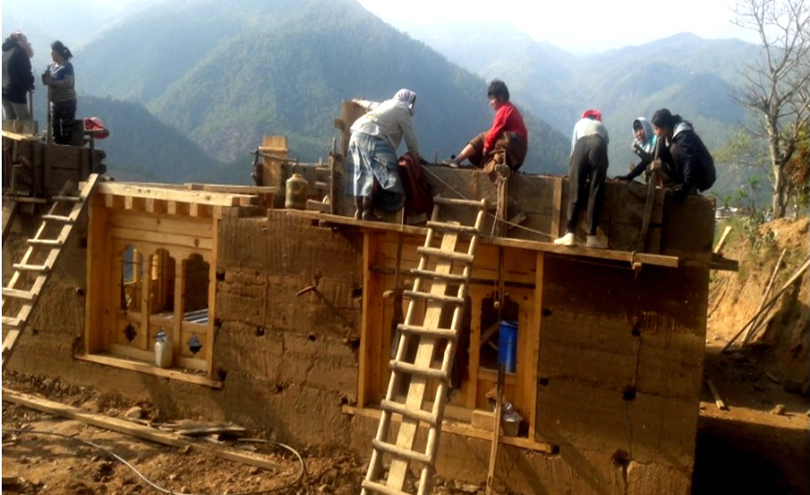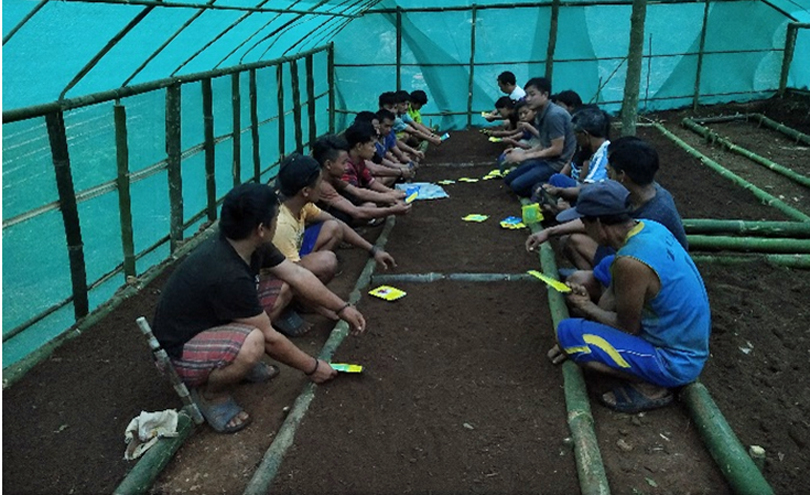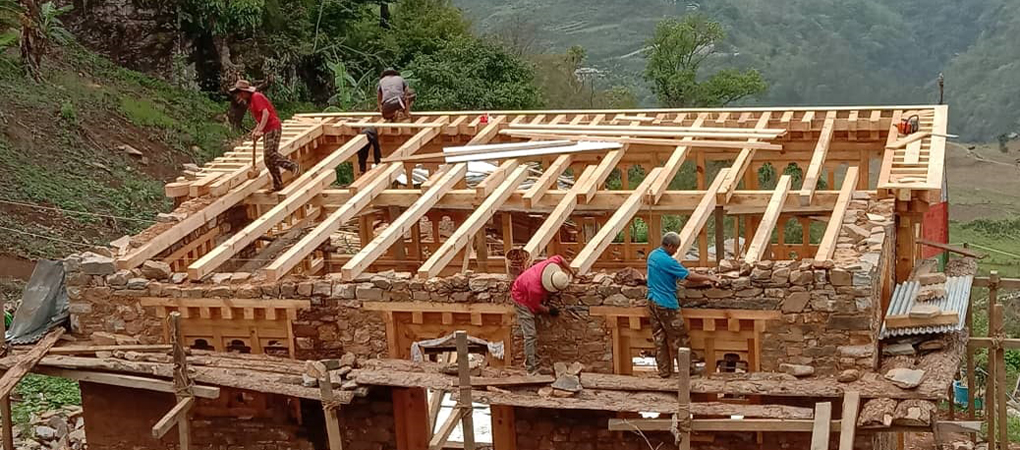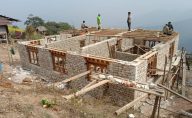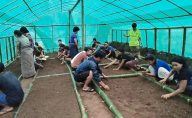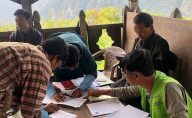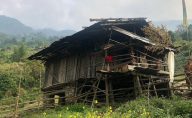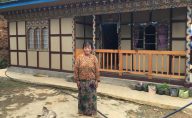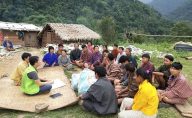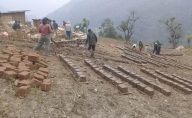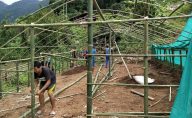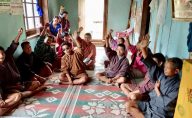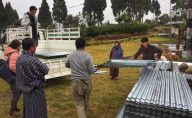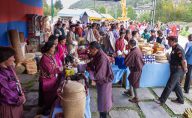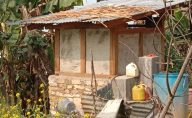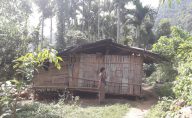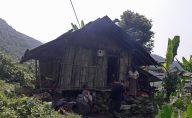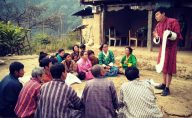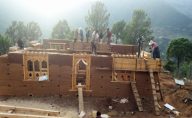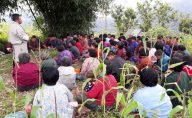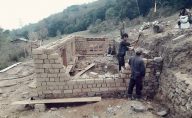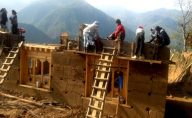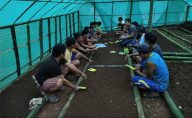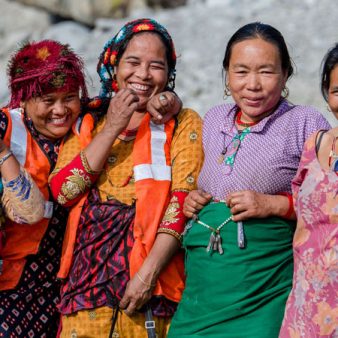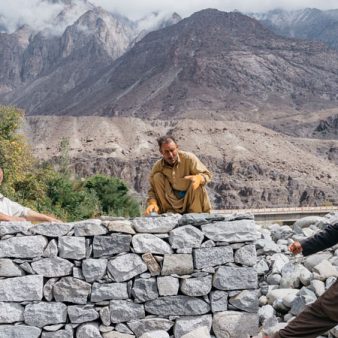Bhutan is a landlocked country high up in the eastern Himalayan mountains. Its population of 770,000 is scattered throughout the country’s steep mountainsides and deep valleys. People living in remote, often inaccessible, villages lack access to basic services and typically live in thatched huts. Poor living conditions and lack of sanitation often result in ill-health while a lack of income-generating opportunities perpetuates the cycle of poverty.
In the 1970s, the former King of Bhutan created the Gross National Happiness Index, a concept of sustainable development which gives wellbeing equal importance to economic growth. In 2008, Bhutan shifted to a democratic constitutional monarchy and in the past decade poverty rates have been cut by two-thirds. However, poverty is still almost 15 times higher in rural areas than in urban areas.
The Integrated Community Development for Poverty Reduction programme aims to alleviate poverty in Bhutan’s remote rural communities by raising the standard of living through improvements to housing, sanitation, economic opportunities and food security.
The project is run by the Tarayana Foundation, a civil society organisation (CSO) founded by the Queen Mother and formally launched by the Crown Prince in May 2003 and is financed through international co-operation and local donations. The model was first piloted in 2007 in a small village of 18 households. Since then, the programme has supported the rural population in more than 400 villages across 19 of Bhutan’s 20 districts.
In total, almost 2,500 houses have been built and 1,000 pour-flush toilets installed, while approximately 50,000 people have accessed training to develop skills and generate income. The programme plans to become far more ambitious over the next five years, hoping to build 2,500 houses, benefitting approximately 12,000 people directly and around 50,000 indirectly.
The programme in practice
Housing improvement is central to the programme. Community groups are trained to construct their own homes, giving them the ability to earn an income from their newly acquired skills and enjoy a more dignified quality of life.
The programme also aims to improve food security and nutrition by increasing agricultural productivity and cultivating a wider variety of foods.
The beneficiaries are low-income residents, often ethnic minorities, who live in remote villages across Bhutan. Villages are selected to participate in the programme based on several criteria. These include: national studies on poverty and living standards; the first-hand experiences of the Queen Mother’s visits to remote communities; requests from village representatives; and site visits by Tarayana’s field officers. Often, neighbouring communities see the results of the project and approach Tarayana requesting participation in the programme.
The foundation first liaises with district authorities, cross-checking local and district-level plans for the village to eliminate any duplication of work. Field officers work directly with the communities and build relationships with local and district government stakeholders, which provide technical assistance. They also work closely with relevant government agencies in terms of the agricultural and health aspects of the project. In the past two years, the foundation has enhanced partnerships with 28 sub-district local government leaders.
Tarayana conducts several rounds of consultations with communities to understand the issues they face. A baseline survey is conducted, followed by a seasonal calendar and resource mapping exercise. This also includes a dream mapping exercise to support the community to come up with potential solutions, taking into account local skills and knowledge.
To select the beneficiaries for housing improvement, a committee is formed comprising of local government, community representatives and a Tarayana field officer. A door-to-door survey is carried out and the selection is finalised based on the physical assessment made by the committee. The list of beneficiaries in need of immediate intervention is then submitted to Tarayana.
The selected beneficiary group (usually between seven and 10 members depending on the size of the village) works as a team to build the homes of each member. Lots are drawn to decide the order in which homes will be built and the group is given training in masonry and carpentry.
Each home must meet requirements for traditional design and disaster resilience features as stipulated by the local government. The beneficiaries determine the size of their houses, depending on individual family composition.
Construction materials are locally sourced and provided by Tarayana, along with support to obtain the relevant building permits. People who are unable to take part in construction – for example, those who live with a disability – are provided with special assistance. Usually this means community members come together to build the house for those residents, without expecting the return of labour. Most houses are completed within two months.
Funding
The total cost of the programme during the two-year period (November 2018 – November 2020) was $1 million USD (annual budget $500,000 USD), funded by the American Himalayan Foundation. Additional grants were also received from a variety of other programmes and foundations which supported the Housing Programme of the Foundation.
The residents join in groups and collectively work together to help build each other’s homes through the traditional practice of labour share arrangements. In doing so, the social cohesion of the communities is strengthened and the members live in harmony.
In addition to facilitating housing improvements, the programme seeks to increase economic opportunities for the communities in which it works. To do this, Tarayana Foundation has developed its own microfinance institution, Tarayana MicroFinance for Rural Development (TMF), which provides loans and training to enable people to set up sustainable income-generating businesses.
This helps people with limited or unreliable incomes to access the funding and knowledge required to increase self-sufficiency. The repayment of loans is flexible, and the interest rate is 13% lower than comparable financial institutions.
Impact
Under the programme, communities work together to solve housing and other collective issues. Housing conditions are improved with no financial cost to residents, making the programme accessible to those on the lowest incomes, and beneficiaries gain the necessary skills to maintain their homes over the long-term.
While previously toilets and sanitation facilities were located outside, the project has included them inside the homes, improving hygiene and health outcomes. Awareness campaigns are also carried out to promote good health and hygiene practices within the community.
The availability and variety of food is increased through improved farming techniques. This has led to better health as well as surplus food production, which is a source of income for farmers.
In 2020, more than 1,000 people took part in skills training – half were women. More than 200 self-help groups were formed with over 3,000 members. These groups set up collective income-generating activities, such as weaving, nettle weaving; wood crafts, cane and bamboo crafts; food production, cotton production; soap, candle and paper-making; and traditional pottery.
Youth engagement programmes tackle unemployment and rural to urban migration. Training and machinery are provided to develop interest in farming as a sustainable profession and some young people have started small agricultural enterprises, such as vegetable cultivation.
The skill enhancement aspect of the programme builds self-esteem and confidence, enabling people to take a more active role in society, including engagement with government officials. This leads to the ability to advocate for the changes they want to see in their communities, rather than having top-down plans imposed on them.
Bhutan is the world’s first carbon-negative country and its extensive forest cover is protected in the country’s constitution, alongside bans on logging exports, mining, pollution, poaching, and hunting. Tarayana’s community development programme operates within this context, basing construction materials on local availability. For example, in eastern Bhutan the main building materials are stone and bamboo (instead of timber), while in the western region houses are constructed with rammed earth.
The project supports communities to control land degradation, reinstate irrigation systems and increase awareness of the effective management of water and land. Eco-friendly farming techniques – such as composting, mulching and crop rotation – improve soil productivity.
Tarayana works with partners to introduce green technologies to further benefit communities. These include water and solar-powered electricity generation, fuel-efficient stoves, solar dryers and water harvesting techniques, among others.
Expansion and transfer
The housing improvement programme is one of Tarayana’s most in-demand and successful projects and has already been applied across most of the country. The project succeeded in developing good working relationships with local administrations, as well as relevant government agencies. The programme requires ongoing grant funding, which it has secured from international as well as local donors. The foundation plans to continue its housing programme and has more than 1,000 new requests for support. Some projects are already in the planning stage; however, some funding has been cancelled due to the COVID-19 pandemic.
The project owes much of its success to date to its collaborative, holistic approach to rural poverty reduction. By enhancing the skill set of remote community groups, the programme not only improves physical living conditions and health outcomes, but also promotes the long-term self-sufficiency of thousands of households across the country.
